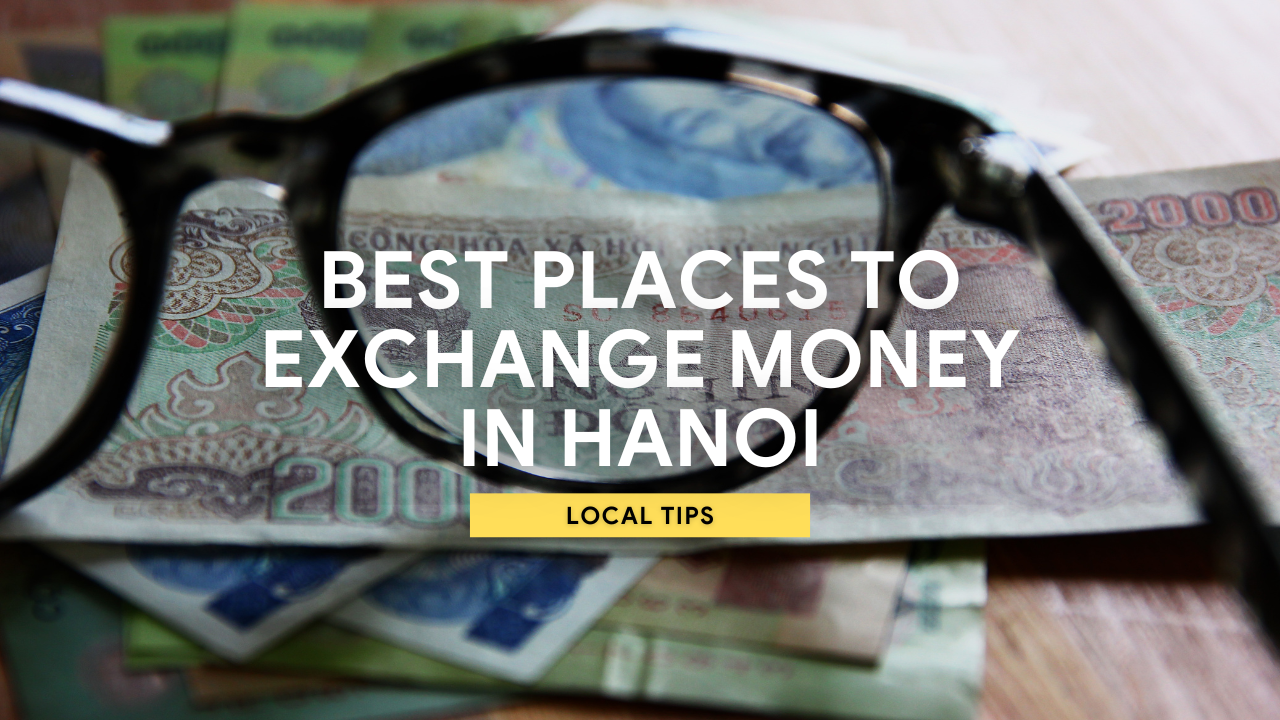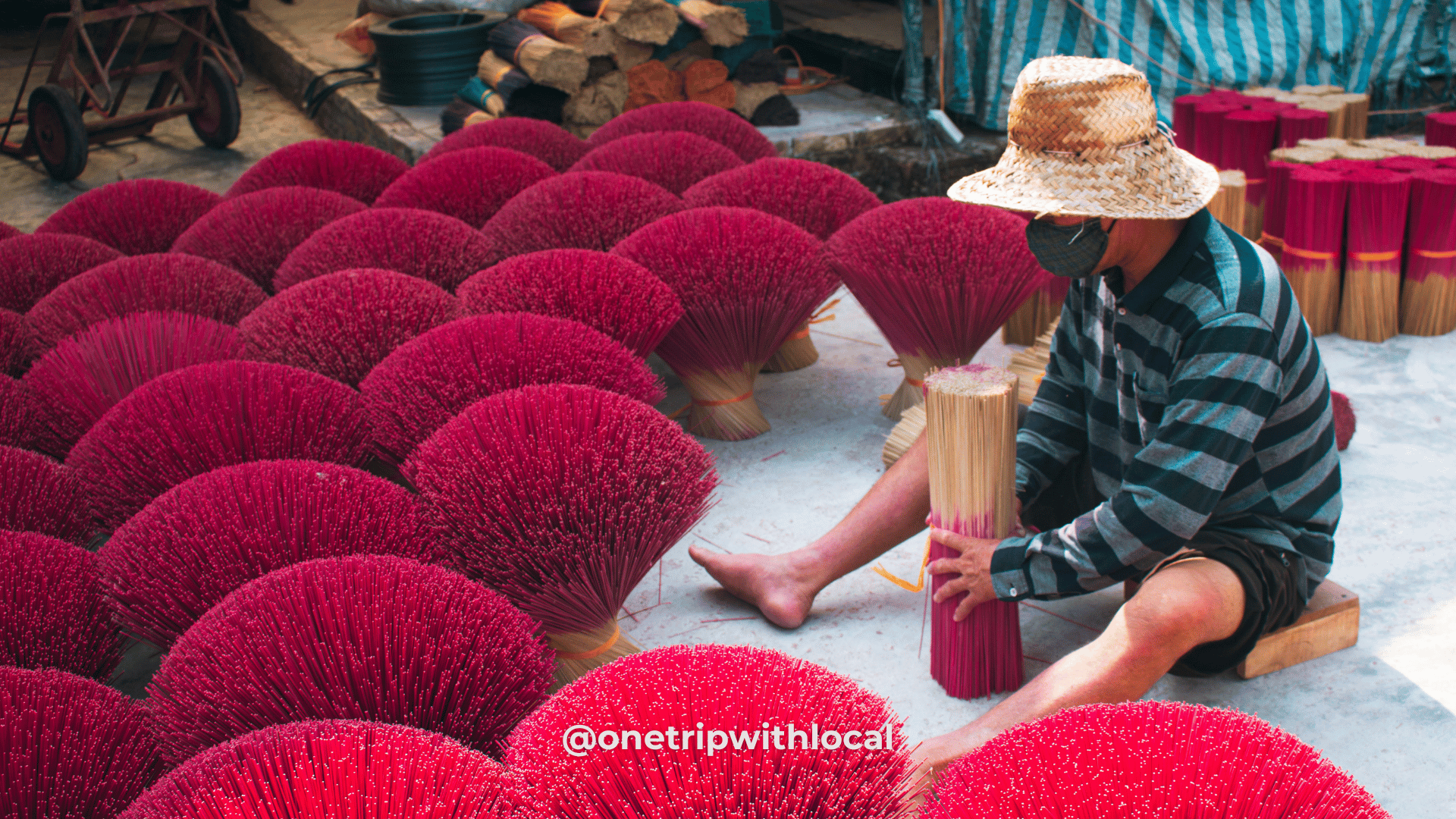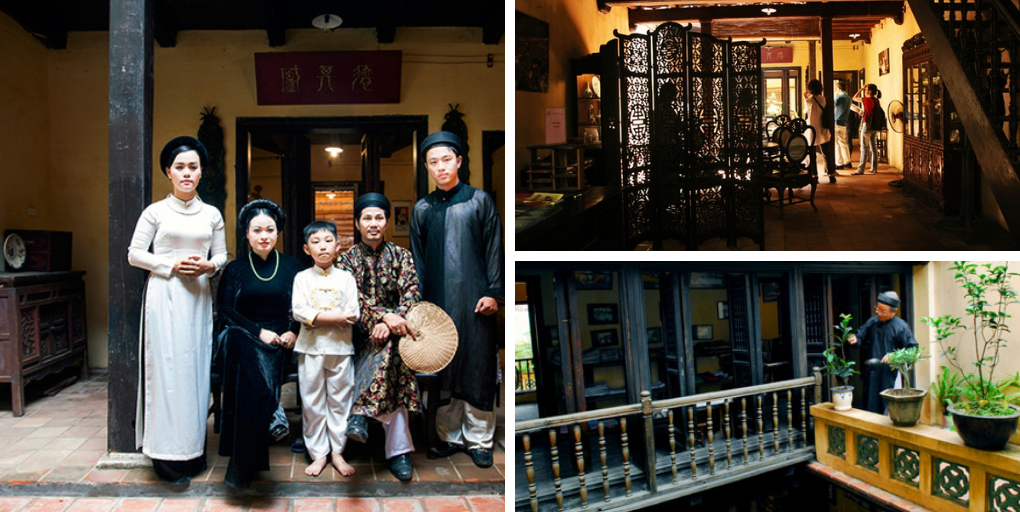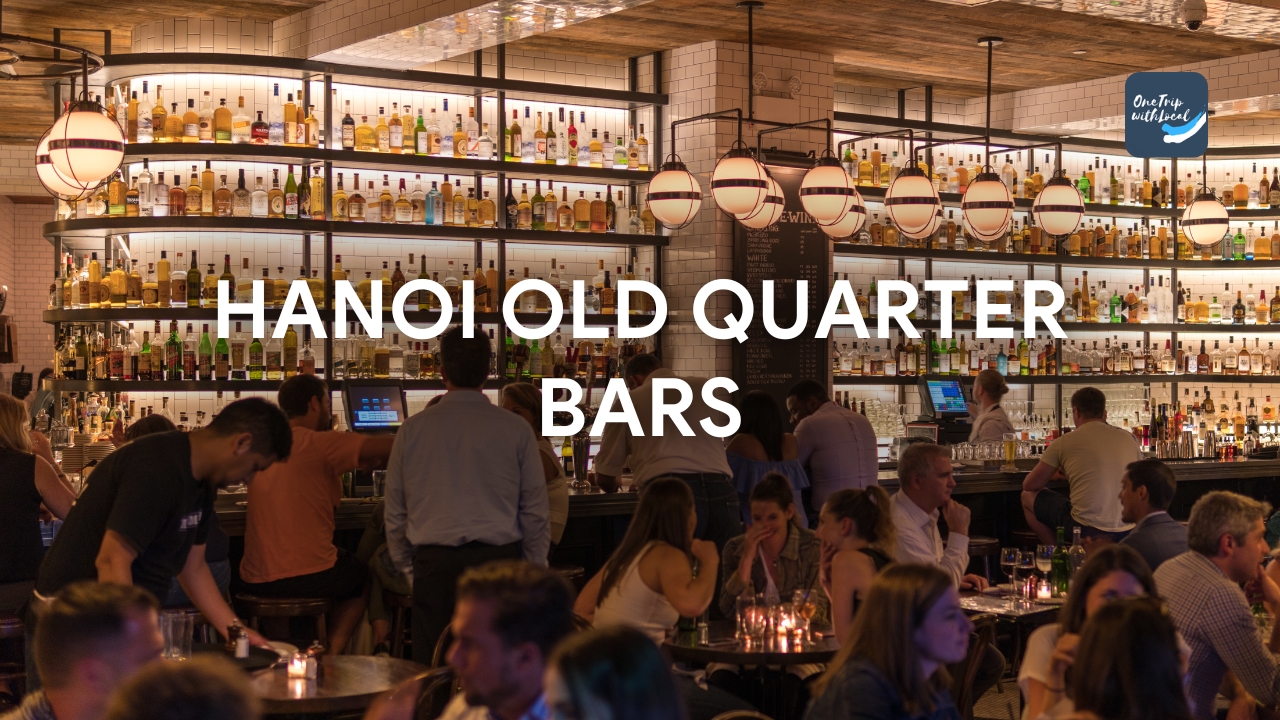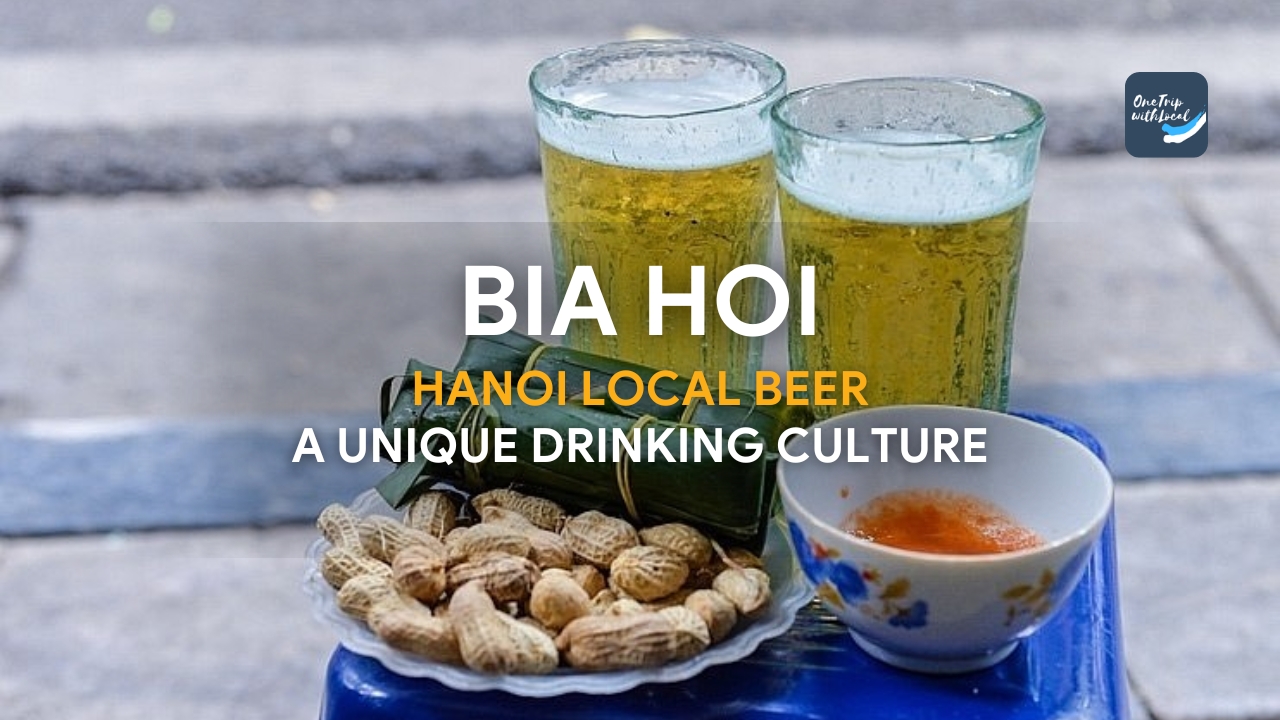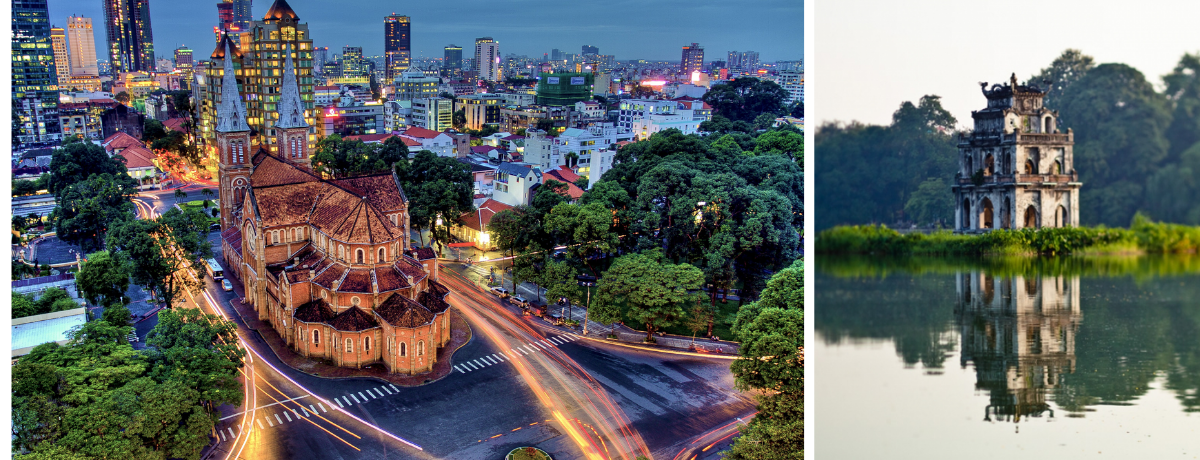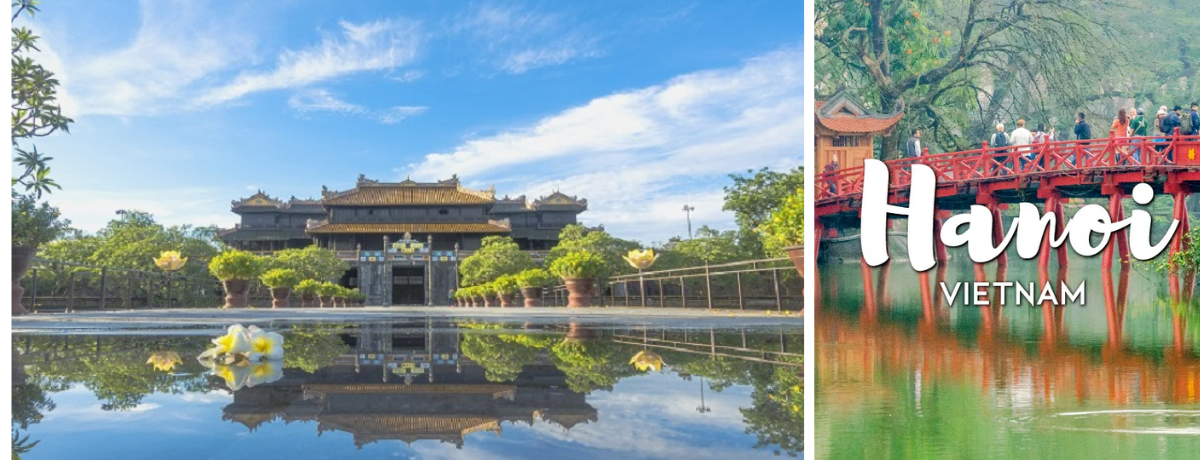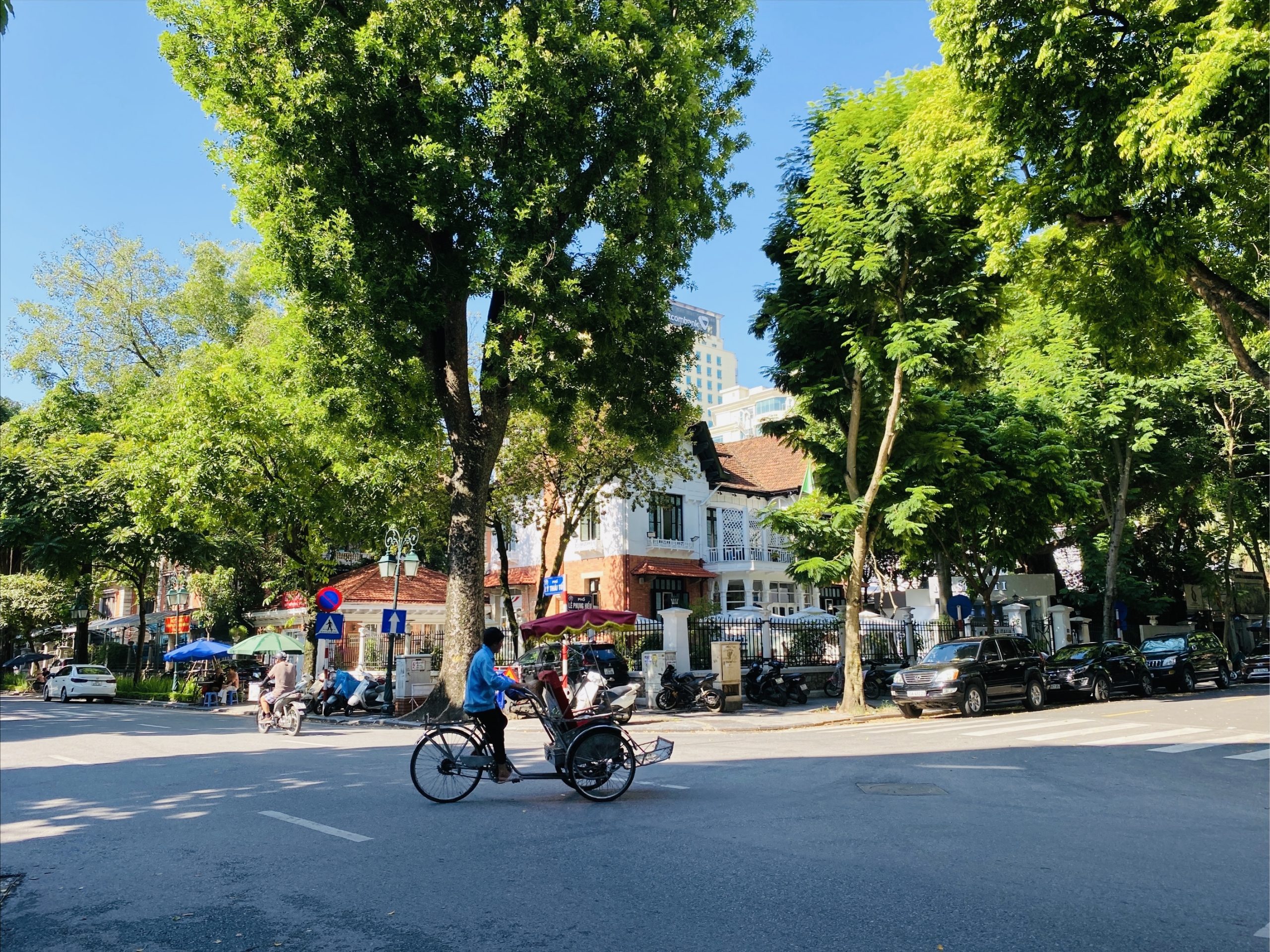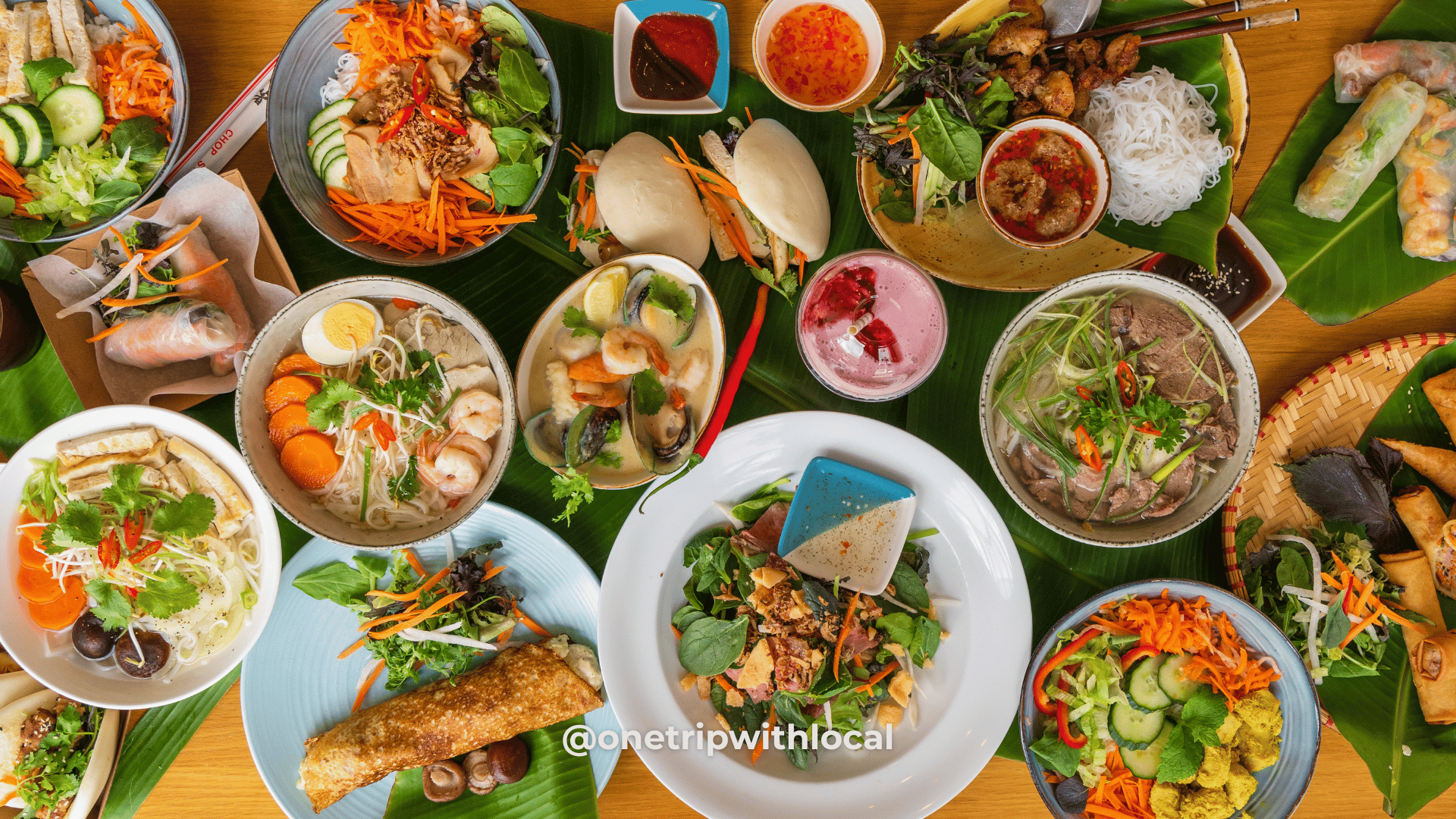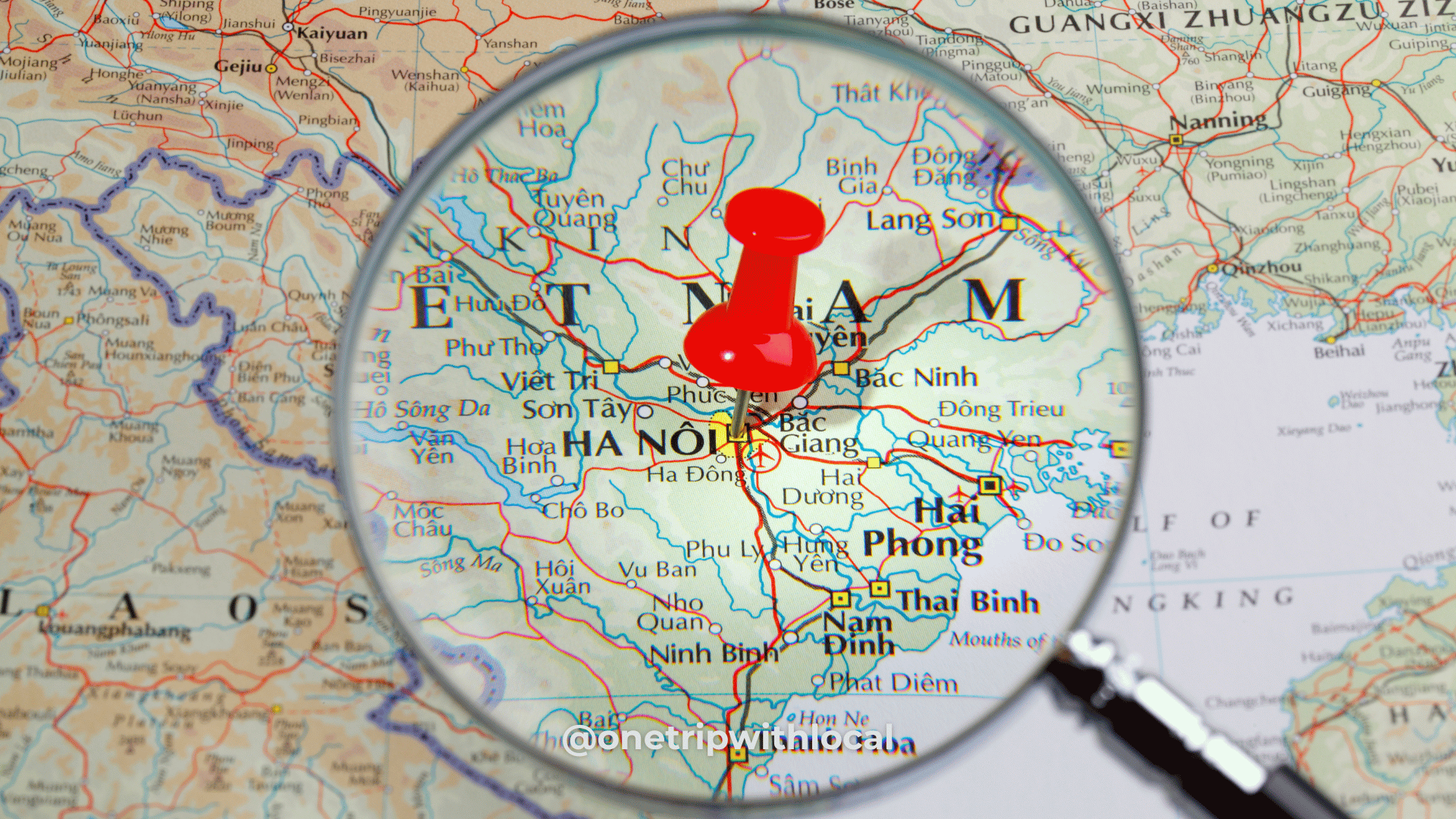Travel to Hanoi: The Definitive Guide
Written by CongLe
Planning a trip to Hanoi?
This post will help you prepare for an unforgettable experience in Vietnam’s vibrant capital.
We’ll cover essential topics such as visa requirements, the best times to visit, budgeting tips, health precautions, and understanding local customs.
By the end, you’ll be well-equipped to explore Hanoi’s rich history, bustling markets, and scenic lakes with confidence.
Let’s get started!
Chapter 1:
Why Travel to Hanoi?
Hanoi is a city that captivates travelers with its unique blend of history, culture, and vibrant street life. Whether you’re drawn to its ancient temples, bustling markets, or world-famous street food, Hanoi offers an experience like no other. In this chapter, we will explore:
- The charm of Hanoi and what makes it stand out in Southeast Asia
- How Hanoi compares to other major cities in Vietnam
- The rising trend of travelers choosing Hanoi in 2024-2025
Ready to uncover what makes Hanoi a must-visit destination? Let’s dive in!
Hanoi captivates visitors with its unique blend of old and new. Ancient temples stand beside French colonial buildings. Street vendors sell traditional food next to modern cafes. The city pulses with energy yet maintains a soulful calm.
Hanoi differs from other Southeast Asian capitals. Bangkok offers glitz and glamour. Kuala Lumpur showcases modern skyscrapers. But Hanoi preserves its cultural heart. The city moves at a more relaxed pace. Life unfolds on the streets. Locals practice tai chi by the lakes at dawn. Friends gather on tiny plastic stools for evening beers.
More travelers discover Hanoi each year. Tourism numbers show steady growth for 2024-2025. People seek authentic experiences beyond the usual tourist spots. Hanoi delivers this authenticity in abundance. The city offers deep history, amazing food, and friendly locals. It provides excellent value for money compared to other Asian destinations.
Hanoi works for many kinds of trips. Solo travelers find welcoming streets and easy connections. Families discover kid-friendly museums and parks. Food lovers encounter countless delicious dishes. Culture seekers explore thousand-year-old traditions still alive today.
The Old Quarter forms Hanoi’s historic heart. Its narrow lanes host shops, homes, and street kitchens. If you want to truly understand this area, consider joining The Hidden Hanoi Old Quarter Experience. Local guides reveal hidden stories and secret spots tourists often miss.
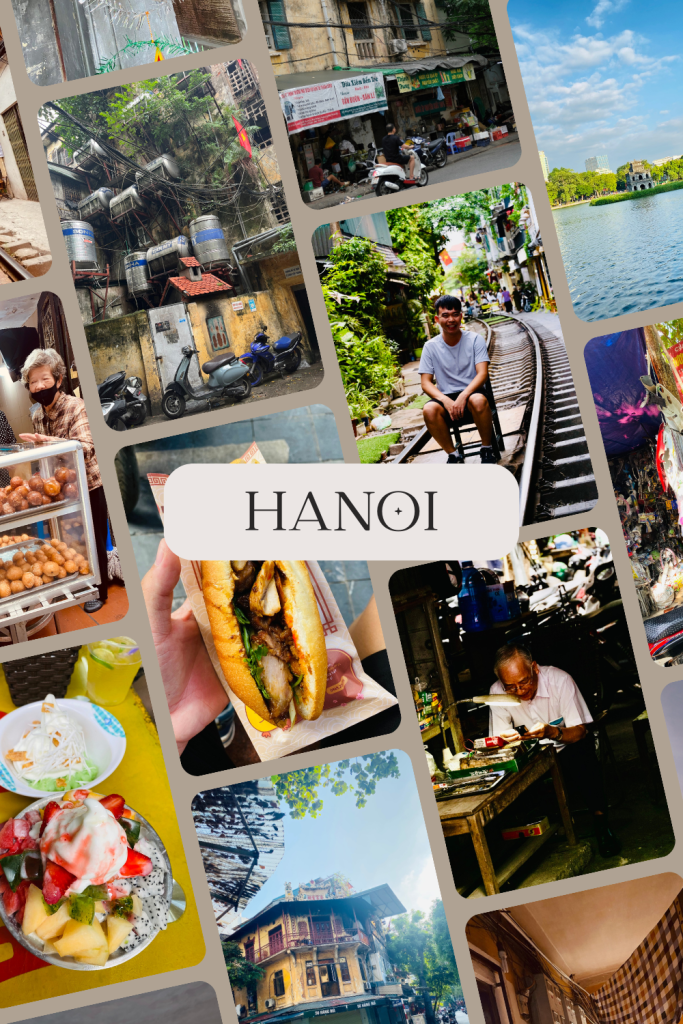
Chapter 2:
Essential Planning Information
Planning a trip to Hanoi? Proper preparation ensures a smooth and enjoyable journey. This chapter provides all the key details you need to know before your visit, including:
- The best time to travel based on weather and festivals
- Visa requirements and entry guidelines for 2024-2025
- Budget tips and money-saving hacks to maximize your experience
- and more
Stay ahead of the curve with expert insights and get ready for an unforgettable adventure in Hanoi!
Best Time to Visit Hanoi
Hanoi experiences four distinct seasons. Each offers different advantages for visitors.
Spring (February-April): Mild temperatures with occasional drizzle. The city celebrates Tet (Lunar New Year) in late January or February. Flowers bloom across the city. Light jackets or sweaters work well during this season.
Summer (May-August): Hot and humid with frequent rain showers. Temperatures reach 90°F (32°C). The city turns lush and green. Pack light clothing, rain gear, and sun protection.
Fall (September-November): The ideal time to visit. Clear skies with cooler temperatures. The city hosts the Mid-Autumn Festival with colorful lanterns and mooncakes. Light layers work best for changing daily temperatures.
Winter (December-January): Cool and sometimes foggy. Temperatures can drop to 55°F (13°C). The city feels less crowded except during Christmas and New Year. Pack a jacket and some warmer layers.
Major festivals impact your visit:
- Tet Holiday (late January/February): The biggest celebration in Vietnam. Many businesses close for up to a week. Locals travel to their hometowns. Book accommodations well in advance.
- Mid-Autumn Festival (September/October): Children carry lanterns. Families share mooncakes. The Old Quarter buzzes with activity.
- National Day (September 2): Parades and celebrations occur across the city.
Crowds peak during Vietnamese holidays and the October-November period. Budget travelers should consider visiting during the shoulder seasons of April-May or September.

Pack based on seasons, but always include:
- Comfortable walking shoes
- Modest clothing for temple visits
- Layers for changing temperatures
- Rain protection year-round
Visa & Entry Requirements
Most visitors to Vietnam need a visa. The rules updated in 2024 offer more flexibility.
E-visa Option: Citizens of 80+ countries can apply online. The process takes 3-5 business days. The fee is $25 USD. E-visas allow stays up to 90 days with single or multiple entries.
Visa Exemptions: Citizens of ASEAN countries and some others (Japan, South Korea, Russia) enjoy visa-free stays of varying lengths.
Apply for e-visa steps:
- Visit the official government website: https://evisa.xuatnhapcanh.gov.vn/
- Complete the application form
- Upload a recent photo and passport scan
- Pay the fee online
- Wait for approval via email
- Print the approval letter to show upon arrival
Immigration tips:
- Keep a printed copy of your e-visa
- Prepare your hotel address for arrival forms
- Ensure your passport validity extends at least six months beyond your planned stay
- Have proof of onward travel ready if asked
Budget & Money-Saving Tips
Hanoi offers excellent value at all budget levels.
Daily budget estimates:
- Budget: $20-30 USD (street food, hostels, public transport)
- Mid-range: $50-100 USD (local restaurants, comfortable hotels, occasional taxis)
- Luxury: $150+ USD (fine dining, luxury accommodations, private tours)
Money-saving flight tips:
- Book 2-3 months in advance
- Consider connecting flights for savings
- Check budget airlines like VietJet, Bamboo Airways, and AirAsia
- Mid-week flights often cost less than weekend departures
Accommodation savings:
- Stay slightly outside the Old Quarter for better rates
- Book directly with hotels after checking online prices
- Consider homestays for cultural experiences at lower prices
- Longer stays often qualify for weekly discounts
Money matters:
- The local currency is Vietnamese Dong (VND)
- ATMs widely available but may charge $2-5 per withdrawal
- Inform your bank about travel plans to prevent card blocks
- Carry some cash for small vendors and markets
- Some higher-end establishments accept credit cards
- Money exchange services offer better rates than airports or hotels
- Read more: The best places to exchange money in Hanoi
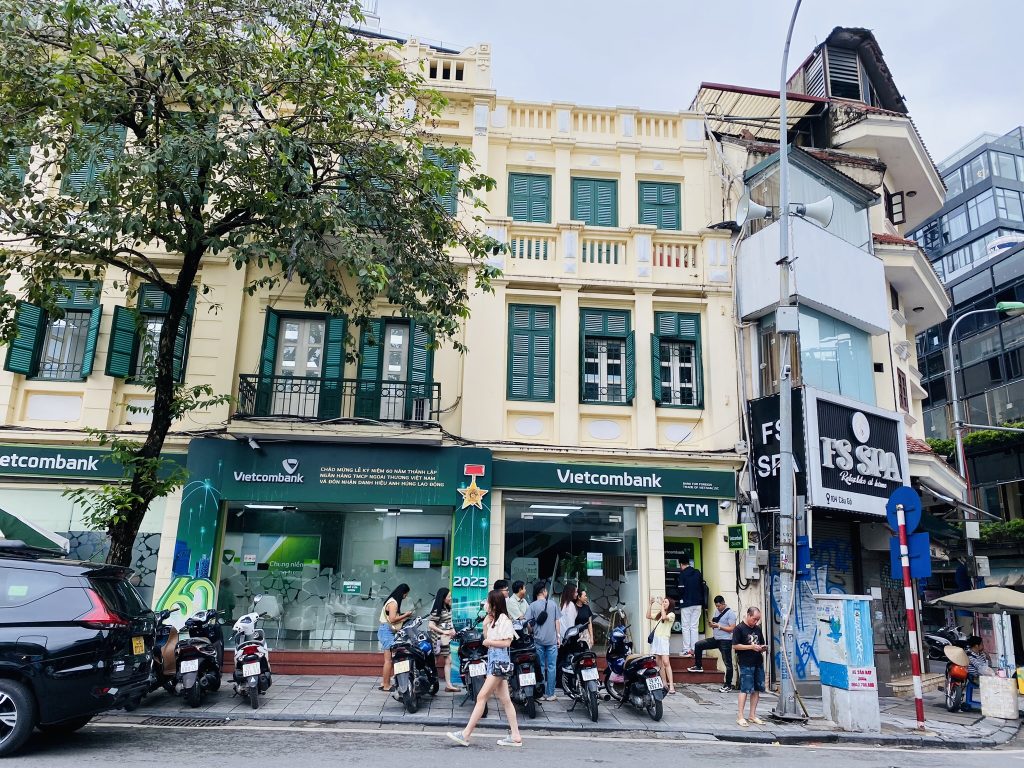
Common scams to avoid:
- Taxi meter tampering (use Grab or Be apps instead)
- “Closed” attractions where guides offer alternatives
- Dramatically inflated prices at tourist markets
- Incorrect change given after transactions
Always agree on prices before services or purchases when possible.
Digital Connectivity and Travel Planning
Staying connected in Hanoi is easy and affordable.
SIM card options:
- Purchase at Noi Bai Airport upon arrival
- Major providers: Viettel, Vinaphone, Mobifone
- Tourist packages cost $5-10 for 30 days with abundant data
- Bring your passport for registration
- Airport shops charge slightly more than city stores
Essential apps:
- Grab or Be: For reliable ride-hailing
- Google Maps: Works well but download offline maps
- Google Translate: With Vietnamese language pack
- Zalo: Popular local messaging app
- TripAdvisor or Foursquare: For attraction and restaurant reviews
Pre-booking necessities:
- Airport transfers save hassle upon arrival
- First night’s accommodation
- Popular restaurants during peak seasons
- Museum tickets for major attractions
Leave room for spontaneous exploration. Some of Hanoi’s best experiences happen when wandering without plans.
Language Basics and Communication Tips
Vietnamese is a tonal language with six different tones. Perfect pronunciation challenges most visitors, but locals appreciate any effort.
Useful phrases:
- Xin chào (sin chow) – Hello
- Cảm ơn (kam un) – Thank you
- Bao nhiêu? (bow nyew) – How much?
- Không, cảm ơn (khom, kam un) – No, thank you
- Tôi không hiểu (toy khom hee-ew) – I don’t understand
Most tourist areas have English speakers. In other areas, use simple words and gestures. Google Translate helps with menus and signs. Learn numbers 1-10 to help with prices and bargaining.
Chapter 3:
Where to Stay in Hanoi?
Finding the perfect place to stay in Hanoi is essential for an unforgettable trip. Whether you seek vibrant city life, cultural charm, or peaceful lakeside views, Hanoi has something for everyone. In this chapter, we’ll explore:
- The best neighborhoods for different travel styles
- Top accommodation options from budget to luxury
- Insider tips to get the best deals and experience local hospitality
Let’s discover the perfect stay for your Hanoi adventure!
Best Neighborhoods for Tourists
Old Quarter The beating heart of historic Hanoi. Narrow streets bustle with shops, food stalls, and life. Stay here for:
- Central location near many attractions
- Vibrant street life and night markets
- Countless food options
- Walking distance to Hoan Kiem Lake
The area gets noisy and crowded but delivers an authentic experience. If staying here, explore hidden corners with The Hidden Hanoi Old Quarter Experience to discover secret spots most tourists miss.
French Quarter South of Hoan Kiem Lake, this area features wide boulevards and colonial architecture. Choose this area for:
- More spacious, quieter surroundings
- Upscale hotels and restaurants
- Historical buildings and museums
- Proximity to Hanoi Opera House
The architecture tells stories of French influence. Learn about this fascinating period with the Coffee, History, and Architecture of the French Quarter Tour.
Tay Ho (West Lake) Popular with expats, this scenic area surrounds Hanoi’s largest lake. Benefits include:
- Peaceful environment away from downtown traffic
- Upscale dining options
- Beautiful lake views and walking paths
- Local neighborhoods with authentic daily life
The area sits farther from central attractions but offers more relaxing stays.
Ba Dinh The political and historical center hosts government buildings and museums. Stay here for:
- Major historical sites like Ho Chi Minh Mausoleum
- Quieter residential atmosphere
- Parks and green spaces
- Museums and cultural institutions
The area offers fewer dining options but more peaceful surroundings.
Accommodation Options
Budget-friendly hostels and guesthouses
- Vietnam Backpacker Hostels: Social atmosphere with activities
- Nexy Hostel: Modern facilities with pod-style beds
- May de Ville Old Quarter: Private rooms at budget prices
- Hanoi Backpacker Hostel: Party atmosphere for younger travelers
Most offer beds for $5-15 per night with private rooms from $20-30.
Mid-range hotels
- La Siesta Hotel & Spa: Excellent service with spa facilities
- Silk Path Hotel: Modern comfort in the Old Quarter
- Hanoi La Selva Hotel: Boutique style with rooftop views
- Hanoi Marvellous Hotel & Spa: Good value near Hoan Kiem Lake
Prices range from $40-80 per night with many including breakfast.
Luxury stays
- Sofitel Legend Metropole: Historic luxury with colonial charm
- Hotel de l’Opera: Theatrical design near the Opera House
- InterContinental Hanoi Westlake: Overwater pavilions on West Lake
- JW Marriott Hotel: Modern luxury with excellent facilities
Expect to pay $150-300+ per night for top-tier experiences.
Unique stays
- The Chi Boutique Hotel: Individual design elements in each room
- Maison d’Orient: French-Vietnamese fusion style
- Airbnb heritage homes in the Old Quarter
- Homestays with local families through platforms like Homestay.com
These options offer character and cultural experiences beyond standard hotels.
Chapter 4:
Getting Around Hanoi
Navigating Hanoi can be an adventure in itself! From bustling streets filled with motorbikes to scenic walking routes, knowing how to get around will make your trip smoother and more enjoyable. In this chapter, we’ll cover:
- The best ways to travel within the city, from public transport to ride-hailing apps
- Tips for renting motorbikes, bicycles, or simply exploring on foot
- How to get to and from Noi Bai International Airport with ease
Let’s explore the best ways to move around Hanoi efficiently and safely!
Transportation Guide
Public transportation
Buses offer the cheapest option but challenge first-time visitors:
- Extensive network covering the entire city
- Fares from 7,000-9,000 VND ($0.30-0.40)
- Google Maps shows routes and times
- Crowded during rush hours
- Bus numbers displayed at stops
Ride-hailing apps provide convenient transportation:
- Grab and Be work like Uber
- Motorbike options cost less than cars
- Clear pricing without bargaining
- GPS tracking for safety
- Both offer English interfaces
Traditional taxis from Mai Linh or Vinasun provide reliable service with meters.
Renting motorbikes or bicycles
Motorbike rentals suit experienced riders:
- Daily rates from 100,000-200,000 VND ($4-8)
- Requires international driving permit
- Helmets provided but bring your own for safety
- Heavy traffic demands confidence
- Ask your accommodation for reputable rental shops
Bicycles offer a gentle alternative:
- Many hotels provide free bicycles
- Rental shops charge 50,000-100,000 VND ($2-4) daily
- Dedicated lanes exist in some areas
- Best during off-peak hours
Walking in Hanoi
Walking works well in these areas:
- Around Hoan Kiem Lake (2km circuit)
- Throughout the Old Quarter’s 36 streets
- The French Quarter’s wide boulevards
- Ba Dinh district’s historical sites
Tips for pedestrians:
- Use sidewalks when available
- Cross streets slowly and steadily
- Watch for motorbikes coming from all directions
- Make eye contact with drivers
Airport transportation
Noi Bai International Airport sits 27km from downtown. Options include:
- Airport Bus #86: 35,000 VND ($1.50), 60-minutes, stops at major points
- Public Bus #17: 9,000 VND ($0.40), 90-minutes, less luggage space
- Grab/Be: 250,000-350,000 VND ($10-15), 30-45 minutes
- Airport taxis: 350,000-400,000 VND ($15-17), fixed rates
- Hotel transfers: 400,000-600,000 VND ($17-25), pre-arranged convenience
During peak hours, allow extra time for traffic congestion.
Chapter 5:
Top Must-See Attractions
Hanoi is a city filled with history, culture, and vibrant energy. Whether you’re drawn to its ancient landmarks, bustling markets, or lively nightlife, there’s something for everyone. In this chapter, we’ll explore:
- Iconic historical sites and cultural experiences
- The best markets for shopping and unique souvenirs
- Must-visit nightlife spots and exciting night markets
Get ready to uncover the very best of Hanoi – from well-known attractions to hidden gems waiting to be explored!
Iconic Landmarks & Historical Sites
Hoan Kiem Lake & Ngoc Son Temple
This lake forms Hanoi’s scenic heart. A peaceful 15-minute walk circles the entire lake. The Ngoc Son Temple sits on a small island accessed by the iconic red Huc Bridge. Visit early morning to see locals practicing tai chi or late evening for colorful lighting. The lake connects to a Vietnamese legend about a magical sword returned to a golden turtle.
Exploring the Old Quarter’s 36 streets
Each street traditionally specialized in specific trades. Today, some still follow these patterns. Hang Bac sells silver. Hang Gai offers silk products. The narrow streets create a maze-like atmosphere. The architecture features tube houses—narrow buildings stretching far back from the street. For deeper insights, join The Hidden Hanoi Old Quarter Experience to understand the history and hidden spots.

Ho Chi Minh Mausoleum & Presidential Palace
This solemn site houses the preserved body of Vietnam’s revolutionary leader. Strict rules apply: modest dress, no photography, and respectful behavior. The mausoleum closes periodically when the body undergoes maintenance. Nearby, see Ho Chi Minh’s stilt house and the Presidential Palace grounds. The complex includes the One Pillar Pagoda, resembling a lotus blossom.
Temple of Literature
Vietnam’s first university dates back to 1070. The complex honors Confucius and Vietnamese scholars. Stone stelae record graduate names from imperial examinations. Beautiful gardens and traditional architecture create a peaceful atmosphere. The site provides insights into Vietnam’s educational history and Confucian influence.
Hanoi Opera House
This magnificent French colonial building showcases neoclassical design. Completed in 1911, it resembles the Paris Opera House. Today it hosts performances ranging from Vietnamese cultural shows to international productions. Even without attending a performance, the exterior makes a perfect photo opportunity. Learn more about the French influence on a Coffee, History, and Architecture of the French Quarter Tour.
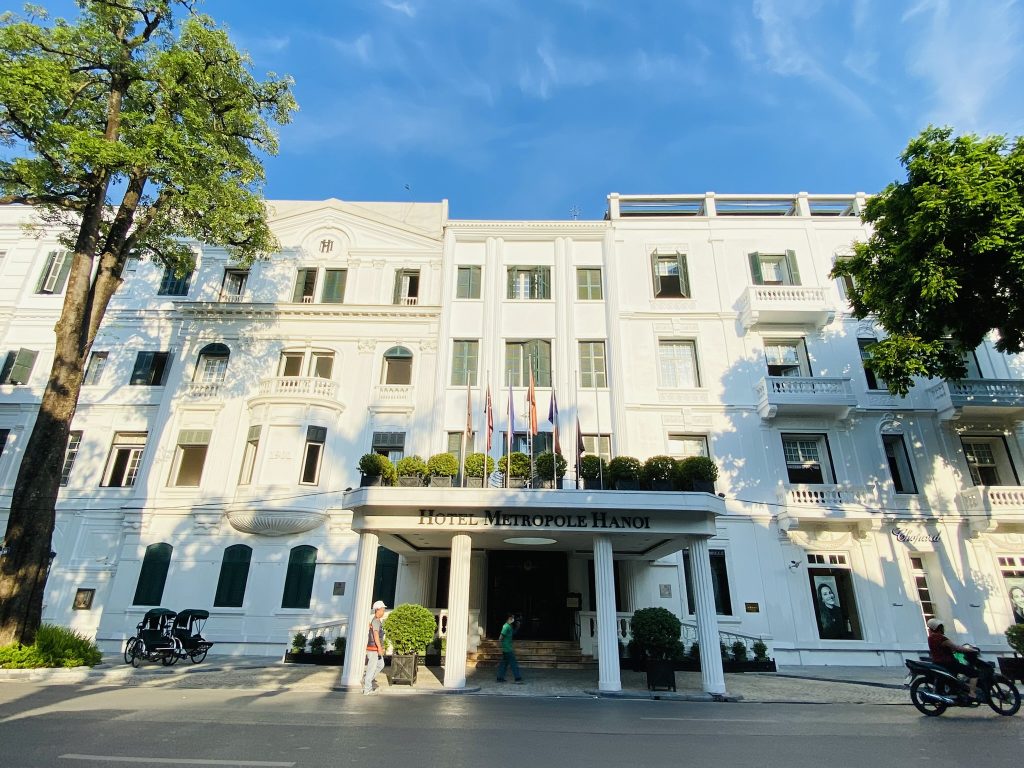

Museums & Cultural Experiences
Vietnam Museum of Ethnology
This exceptional museum showcases Vietnam’s 54 ethnic groups. Indoor exhibits display clothing, tools, and artifacts. The outdoor area features full-size traditional homes from different regions. Allow 2-3 hours to fully appreciate the collections. The museum provides English descriptions and offers insights into Vietnam’s cultural diversity.
Hoa Lo Prison (Hanoi Hilton)
American POWs sarcastically nicknamed this French colonial prison the “Hanoi Hilton.” Most exhibits focus on Vietnamese revolutionaries imprisoned during French rule. One section covers American pilots held during the Vietnam War, including Senator John McCain. The museum presents history from the Vietnamese perspective.
Vietnamese Women’s Museum
This modern museum celebrates Vietnamese women’s contributions to society. Exhibits cover family life, fashion, religious practices, and women’s roles in warfare. The war section particularly moves visitors with stories of female soldiers and supporters. Well-organized with English explanations throughout.
Hanoi Nightlife & Night Markets
Best night markets
Hanoi’s markets come alive after sunset:
- Dong Xuan Market: The largest covered market transforms at night with outdoor vendors
- Weekend Walking Streets: Friday through Sunday, streets around Hoan Kiem Lake close to traffic for performances, games, and food stalls
- Quang Ba Flower Market: Opens from 2 AM offering wholesale flowers in a colorful atmosphere
Top nightlife spots
Hanoi offers diverse evening entertainment:
- Bia Hoi Corner: Ultra-cheap draft beer on plastic stools at Ta Hien Street
- Hanoi Rock City: Live music venue featuring local and international acts
- Standing Bar: Craft beer paradise with dozens of taps
- Savage Club: Electronic music in an industrial setting
For areas with complex history, consider the Hanoi not-to-go-alone areas & stories from Vietnam war tour.
Unique nighttime experiences
Beyond typical nightlife:
- Water puppet shows at Thang Long Theater near Hoan Kiem Lake
- Old Quarter food tours sampling street food after dark
- Sunset drinks at rooftop bars overlooking the city
- West Lake evening walks along illuminated pathways
Unique & Off-the-Beaten-Path Attractions
Long Bien Bridge
This historic iron bridge designed by Gustave Eiffel’s company survived American bombing during the war. Today it carries trains, motorbikes, and pedestrians across the Red River. Walking across offers unique city views and glimpses of river life below. Visit at sunrise for the best experience.
Train Street
Residential houses line both sides of active train tracks in a uniquely Vietnamese scene. Authorities periodically restrict access due to safety concerns. Check current regulations before visiting. When open, cafes offer viewing spots for passing trains. The area demonstrates how Vietnamese people adapt to tight urban spaces.
Bat Trang Ceramic Village
This 500-year-old village specializes in pottery production. Visitors can watch artisans at work, try making ceramics, and purchase directly from producers. Located 13km southeast of Hanoi, the village makes an excellent half-day trip. Workshops offer hands-on experiences for all ages.
Van Phuc Silk Village
Silk weavers have practiced their craft here for centuries. The village sits 10km from central Hanoi. Visitors observe the silk-making process from silkworm to finished products. Local shops sell high-quality scarves, dresses, and fabrics directly from producers.
Duong Lam Ancient Village
This preserved village 45km from Hanoi features houses over 300 years old. The laterite brick buildings show traditional Vietnamese architecture. Several ancient temples and communal houses dot the village. Significantly less touristy than other attractions, it offers authentic glimpses of rural Vietnamese life.
Chapter 6:
Hanoi Food Guide
Hanoi is a paradise for food lovers, offering a rich blend of flavors, textures, and aromas. Whether you’re craving street food delights or indulging in fine dining, this city has something for every palate. In this chapter, we’ll explore:
- Must-try traditional dishes that define Hanoi’s culinary scene
- The best street food spots and hidden gems loved by locals
- Unique dining experiences that go beyond just eating
Get ready to embark on a flavorful journey through Hanoi’s vibrant food culture!
Must-Try Hanoi Dishes
Pho
Hanoi’s famous noodle soup features clear broth, flat rice noodles, and beef or chicken. The Hanoi style uses fewer herbs and condiments than southern versions. The broth develops flavor from long simmering of bones and spices. Best enjoyed for breakfast at street stalls with tiny plastic stools. Look for places with lines of locals.
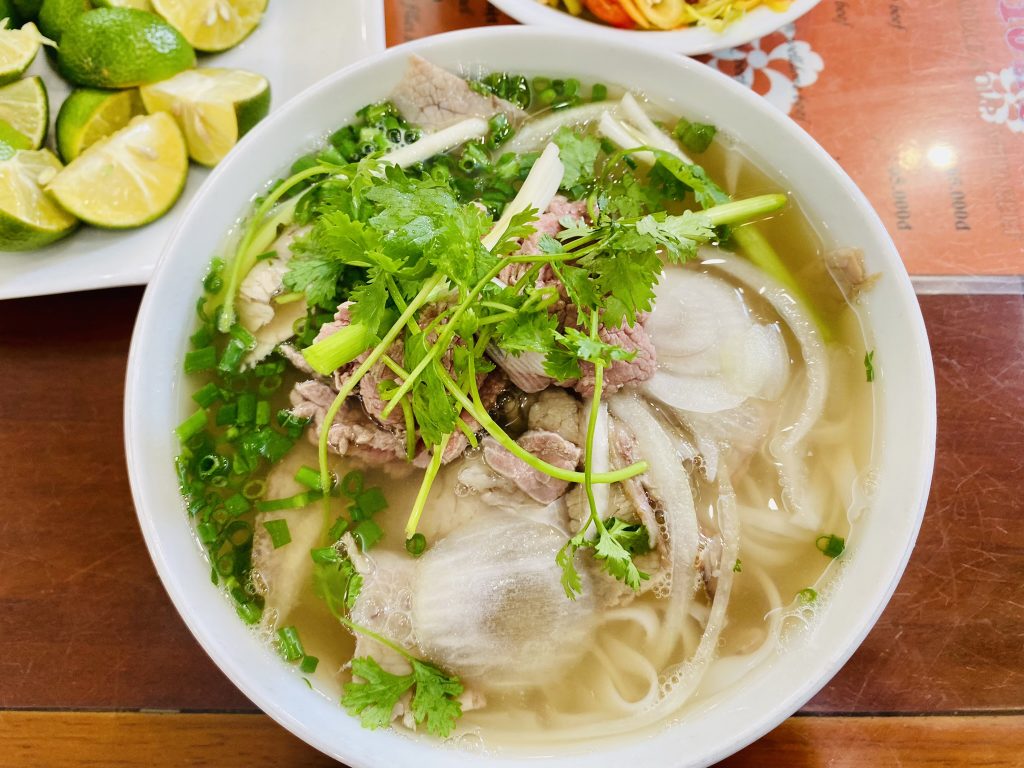
Bun Cha
This lunchtime favorite combines grilled pork patties, cold rice noodles, and herb platters. Dip everything in a sweet-sour fish sauce broth. The dish gained international fame when Anthony Bourdain shared it with President Obama. Find it at specialized stalls from 11 AM to 2 PM. Bun Cha Huong Lien (also called “Bun Cha Obama”) attracts many tourists.
Banh Mi
The Vietnamese sandwich combines French baguettes with local ingredients. Hanoi versions typically include pâté, Vietnamese cold cuts, cucumber, and pickled vegetables. Less herb-heavy than southern styles. Vendors sell these portable meals throughout the day. Perfect for quick breakfasts or on-the-go lunches.
Egg Coffee (Ca Phe Trung)
This unique Hanoi creation features a creamy mixture of egg yolks, sugar, and condensed milk floating atop strong Vietnamese coffee. Invented during milk shortages in the 1940s. The result tastes like liquid tiramisu. Giang Cafe claims to be the original creator, though many cafes now offer it.
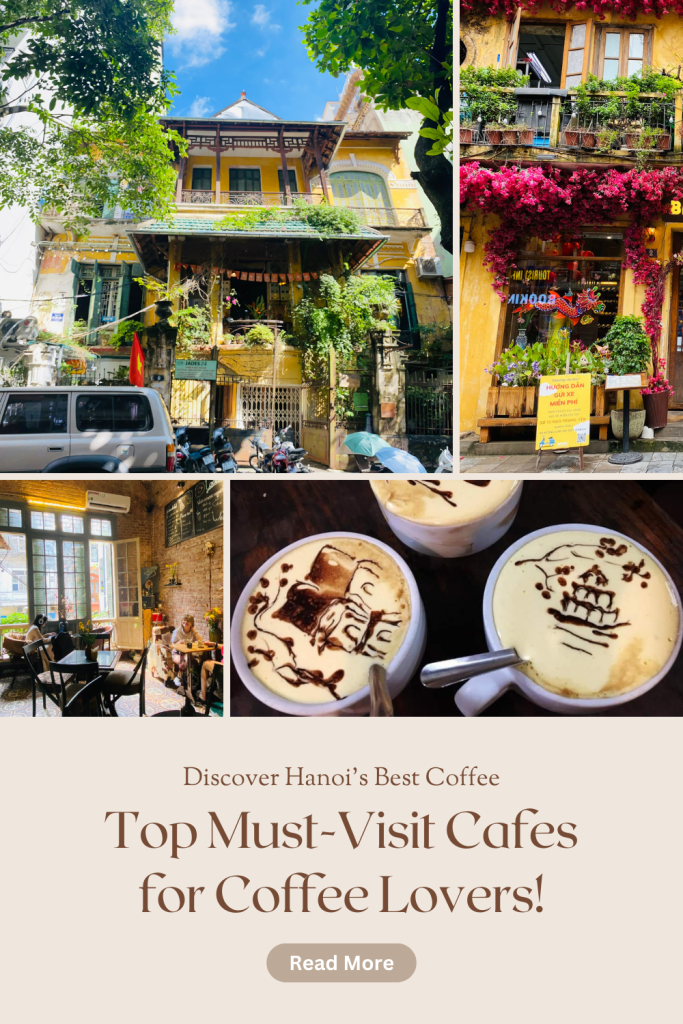
For vegans and vegetarians, Hanoi offers plant-based versions of many classics. Discover these on the Hanoi Vegetarian Street Food Tour & Stories with vegan options available.
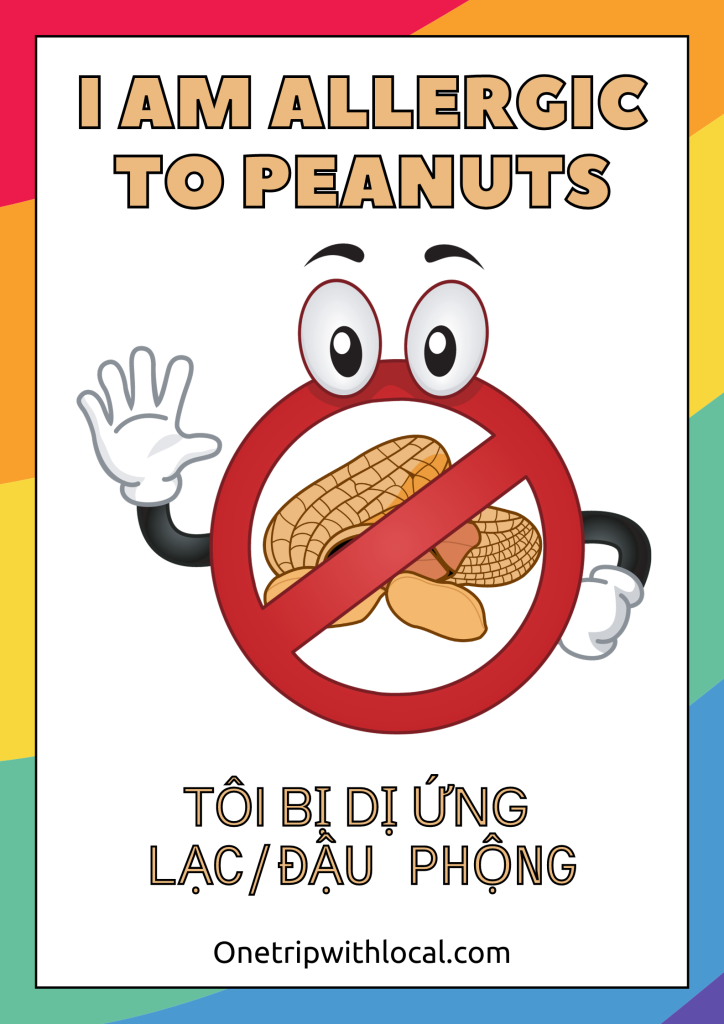
Craft Beer
Craft beer is becoming increasingly popular in Hanoi. You can enjoy the unique flavors of local craft beer, ranging from jasmine to dragon fruit. Whenever I have friends visiting me, I always take them to my favorite beer shop located at 1 Au Trieu, just behind the St. Joseph Cathedral in Hanoi.
Address: 1 Au Trieu, Hoan Kiem, Hanoi
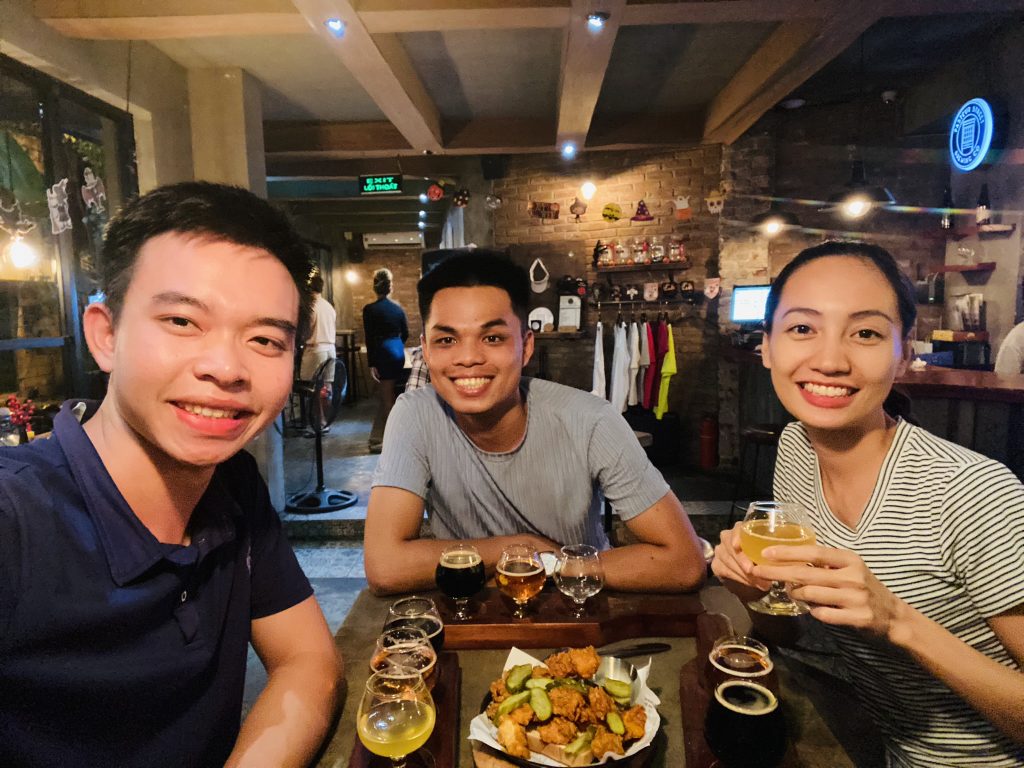
Best Places to Eat in Hanoi
Famous street food stalls and markets
- Pho Thin: Renowned for beefy, flavorful pho at 13 Lo Duc Street
- Bun Cha Huong Lien: The “Obama” bun cha spot at 24 Le Van Huu
- Banh Mi 25: Popular sandwich shop in the Old Quarter
- Dong Xuan Market food court: Variety of local dishes in one location
To discover hidden food gems with a local, join the Eat Like A Local- Hanoi Street Food & Hidden Path tour.
Local restaurants & hidden gems
- Cha Ca Thang Long: Specializes in turmeric fish with dill
- Quan An Ngon: Multiple locations serving street food in restaurant settings
- Bun Bo Nam Bo: Dry noodles with beef, named after the restaurant at 67 Hang Dieu
- New Day Restaurant: Family-run spot with well-executed classics
Fine dining & rooftop bars
- Green Tangerine: French-Vietnamese fusion in a colonial building
- Porte D’Annam: Upscale Vietnamese in elegant surroundings
- Skyline Hanoi: Rooftop views with international and Vietnamese options
- The Rooftop Bar at Pacific Place: Cocktails with panoramic city views
Cooking classes and food tours
- Hanoi Cooking Centre: Market visits followed by hands-on cooking
- Rose Kitchen: Small-group classes in a family home
- Highway4 cooking classes: Focus on northern Vietnamese specialties
- Hidden Hanoi: Cultural context with cooking techniques

Cultural Dining Traditions, Do’s, Don’ts
Cultural traditions:
- Meals typically feature shared dishes placed in the center
- Rice accompanies most meals as the staple
- Chopsticks and spoons serve as the primary utensils
- Tea often accompanies or follows meals
Dining etiquette:
- Wait for elders or hosts to begin eating
- Hold rice bowls close to your mouth while eating
- Rest chopsticks on the table or chopstick rest, not in your bowl
- Try at least a small portion of everything offered
- Leave a little food on your plate to show satisfaction
Food safety tips:
- Choose busy stalls with high turnover
- Look for places where locals eat
- Avoid raw vegetables if you have a sensitive stomach
- Drink bottled water or properly boiled tea
Chapter 7:
Shopping and Markets
Hanoi is a shopper’s paradise, offering everything from bustling traditional markets to trendy artisan boutiques. Whether you’re looking for unique souvenirs, handcrafted goods, or fresh local produce, the city has something for everyone. In this chapter, we’ll explore:
- The best local markets for authentic shopping experiences
- Unique shopping streets and specialty stores
- Top souvenirs to bring home from Hanoi
Let’s dive into Hanoi’s vibrant shopping scene and discover where to find the best deals and hidden gems!
Hanoi offers shopping experiences from traditional markets to modern malls.
Best local markets:
- Dong Xuan Market: The city’s largest covered market spans four floors. Find clothing, housewares, food, and souvenirs. Best for wholesale purchases and local atmosphere.
- Hang Da Market: Three-story market with fabric, clothing, and souvenirs on lower floors. The ground floor hosts a wet market with fresh foods.
- Chợ Hôm Market: Less touristy textile market where locals shop for fabrics and ready-made clothing. Better prices than tourist areas.
Global brands:
- Vincom Center: Multiple locations offering international brands like Zara and H&M.
- Lotte Center: Korean department store with high-end brands and a top-floor observatory.
- Trang Tien Plaza: Luxury shopping with brands including Louis Vuitton and Dior.
- Decathlon: Affordable sporting goods with a massive store near West Lake.
Unique shopping experiences:
- Hang Gai (Silk Street): Boutiques selling handmade silk products, from scarves to custom clothing.
- Lan Ong Street: Traditional medicine shops with herbs, teas, and natural remedies.
- To He Traditional Toy Workshop: Colorful rice dough figurines made by hand.
- Collective Memory: Artist-run boutique selling unique local designs.
Best souvenirs from Hanoi:
- Silk scarves and garments
- Lacquerware boxes and bowls
- Hand-embroidered linens
- Conical hats (non luon)
- Vietnamese coffee and phin filters
- Batik fabrics from ethnic minorities
- Bamboo kitchenware
- Custom-made clothing (allow 24-48 hours)
Bargaining remains expected in markets but not in fixed-price shops. Start around 40% below the asking price and negotiate with a smile. Walk away if prices seem unreasonable – you’ll often be called back with a better offer.
Chapter 8:
Suggested Hanoi Itineraries
This chapter is your ultimate guide to exploring the city like a pro. Whether you have just one day or an entire week, we’ve curated the best itineraries to help you make the most of your time.
- Discover must-visit historical sites and cultural gems
- Experience Hanoi’s vibrant street food scene
- Explore hidden alleys, scenic lakes, and bustling markets
Get ready to immerse yourself in the charm of Hanoi. Let’s dive in!
1-Day Express Trip
Perfect for layovers or short visits, this schedule hits the highlights:
Morning:
- 7:00 AM: Breakfast pho at a local street stall
- 8:00 AM: Walk around Hoan Kiem Lake
- 9:00 AM: Visit Ngoc Son Temple on the lake
- 10:30 AM: Explore the Old Quarter streets and shops
Afternoon:
- 12:30 PM: Bun cha lunch
- 2:00 PM: Visit the Temple of Literature
- 3:30 PM: Explore Hoa Lo Prison Museum
- 5:00 PM: Coffee break with egg coffee
Evening:
- 6:30 PM: Dinner at Quan An Ngon
- 8:00 PM: Evening walk through the night market (weekend) or around illuminated Hoan Kiem Lake
- 9:30 PM: Bia hoi (draft beer) in the Old Quarter
3-Day Classic Hanoi Experience
Day 1: Historic Highlights
- Morning: Ho Chi Minh Complex and Ba Dinh Square
- Lunch: Bun cha near the complex
- Afternoon: Temple of Literature and Vietnam Military History Museum
- Evening: Water puppet show and dinner in the Old Quarter
- Consider the Hidden Hanoi Old Quarter Experience to start your trip with deeper understanding
Day 2: Cultural Immersion
- Morning: Vietnam Museum of Ethnology
- Lunch: Try cha ca (turmeric fish)
- Afternoon: Hoa Lo Prison and Vietnamese Women’s Museum
- Evening: Street food tour in the Old Quarter
- The Eat Like A Local- Hanoi Street Food & Hidden Path tour reveals hidden food spots
Day 3: Local Life and Relaxation
- Morning: Explore West Lake and Tran Quoc Pagoda
- Lunch: Seafood by West Lake
- Afternoon: Shopping for souvenirs in the Old Quarter
- Evening: Sunset drinks at a rooftop bar followed by dinner
- Learn about French influence with the Coffee, History, and Architecture of the French Quarter Tour
5-Day In-Depth Exploration
Days 1-3: Follow the 3-day itinerary above
Day 4: Day Trip Option Choose one:
- Ninh Binh: Boat rides through limestone karsts (2-hour drive)
- Perfume Pagoda: Temple complex reached by boat and hiking (1.5-hour drive)
- Duong Lam Ancient Village: Traditional architecture (1-hour drive)
Day 5: Local Crafts and Culture
- Morning: Visit Bat Trang Ceramic Village
- Lunch: Local meal in the village
- Afternoon: Return to Hanoi, visit the Fine Arts Museum
- Evening: Farewell dinner at an upscale Vietnamese restaurant
If traveling with children, the Kids Friendly Hanoi Old Quarter Tour provides engaging activities designed for younger travelers.
Chapter 9:
Trips after Hanoi or near Hanoi
his chapter highlights the best trips you can take after Hanoi or nearby destinations perfect for a short getaway.
- Escape to the serene beauty of Ninh Binh or Mai Chau
- Discover the stunning limestone islands of Ha Long Bay
- Experience the rich culture of ancient villages and mountain retreats
Get ready to explore beyond Hanoi and uncover Vietnam’s hidden wonders!
Ha Long Bay
This UNESCO World Heritage site features thousands of limestone islands in emerald waters. Located 170km east of Hanoi (3-4 hour drive).
Cruise options:
- Day trips: Budget-friendly but rushed. Not recommended unless time constraints are severe.
- Overnight cruises: The standard option. One night allows visits to major sights.
- 2-3 night cruises: More relaxing with visits to less crowded areas.
Choosing the right cruise:
- Budget: $70-300+ per person per day
- Ship size matters: Smaller boats (10-20 cabins) offer more personal experiences
- Itinerary: Check which caves, beaches, and activities are included
- Meal inclusions: Higher-end boats offer better dining
- Book through reputable agencies or directly with cruise companies
Ninh Binh
Often called “Ha Long Bay on land,” this area features limestone karsts surrounded by rice fields instead of water. Located 100km south of Hanoi (2-hour drive).
Key attractions:
- Trang An: UNESCO site with boat rides through caves and past temples
- Tam Coc: Three grottoes explored by rowboats through rice fields
- Hang Mua: Temple atop 500 steps offering panoramic views
- Bai Dinh Pagoda: Largest Buddhist complex in Vietnam
Most visitors stay overnight, but day trips from Hanoi remain possible.
Sapa
Famous for terraced rice fields and ethnic minority cultures, Sapa sits in Vietnam’s northern mountains. Located 320km northwest of Hanoi (5-6 hour drive or overnight train).
Trekking options:
- Easy half-day walks to nearby villages
- Moderate full-day treks through multiple communities
- Challenging multi-day hikes with homestays
Best visited:
- February-May: Clear weather before rice planting
- September-November: Harvest season with golden rice terraces
Minimum recommended stay: 2 nights/3 days.
Ha Giang Loop
This remote northern circuit offers Vietnam’s most spectacular mountain scenery. Located 300km north of Hanoi (6-7 hour drive).
The experience:
- 3-4 day motorbike circuit through dramatic landscapes
- Encounters with diverse ethnic minority groups
- Challenging roads requiring experienced riders
- Less developed tourism infrastructure than other destinations
Guided tours with drivers available for those who don’t ride motorbikes. Best visited March-May or September-November to avoid rainy season.
Chapter 10:
Safety & Travel Tips
Traveling to Hanoi and beyond is an exciting adventure, but staying safe and prepared is key to making the most of your journey. This chapter provides essential tips to help you navigate Vietnam with confidence.
- Learn how to stay safe in crowded areas and avoid common scams
- Get insights on transportation, from taxis to motorbikes
- Discover cultural etiquette to enhance your travel experience
With these practical tips, you’ll be ready for a smooth and enjoyable trip. Let’s dive in!
Is Hanoi Safe for Tourists?
Hanoi ranks among Southeast Asia’s safest cities for visitors. Violent crime rarely targets tourists. Most problems involve petty theft or scams.
Common scams and how to avoid them:
- Taxi overcharging: Use ride-hailing apps or official taxi companies with meters
- Price switching: Confirm prices before ordering food or services
- Shoe repair approaches: Decline offers from people pointing out “problems” with your shoes
- Currency confusion: Learn the difference between similar denominations
- Motorbike rental damage claims: Document existing damage before renting
- “Closed attraction” redirects: Verify opening hours from official sources
Solo female traveler safety tips:
- Hanoi generally feels safe for solo women, even at night in busy areas
- Dress modestly to minimize unwanted attention
- Stay in well-reviewed accommodations with 24-hour reception
- Share itineraries with someone you trust
- Trust your instincts about uncomfortable situations
- Use transportation apps rather than hailing street vehicles at night
The biggest dangers come from traffic. Cross streets carefully and stay alert on sidewalks where motorbikes sometimes drive.
Cultural Etiquette & Local Customs
Understanding Vietnamese customs enhances your experience and shows respect.
Dos for interacting with locals:
- Greet people with a slight bow or handshake
- Accept business cards or gifts with both hands
- Remove shoes when entering homes or certain temples
- Dress modestly, especially at religious sites
- Learn a few Vietnamese phrases
- Ask permission before photographing people
Don’ts when in Vietnam:
- Touch someone’s head (considered sacred)
- Point with your index finger (use open hand instead)
- Show public displays of affection beyond hand-holding
- Lose your temper or raise your voice
- Discuss sensitive political topics in public
Proper dress codes:
- Temples and pagodas: Cover shoulders and knees
- Ho Chi Minh Mausoleum: Formal attire (no shorts, sleeveless tops, or flip-flops)
- Restaurants and shops: Casual but neat clothing
- Business meetings: Conservative business attire
Basic Vietnamese phrases:
- Xin chào (sin chow) – Hello
- Cảm ơn (kam un) – Thank you
- Xin lỗi (sin loy) – Excuse me/Sorry
- Tạm biệt (tam bee-et) – Goodbye
- Tôi không hiểu (toy khom hee-ew) – I don’t understand
Chapter 11:
Frequently Asked Questions (FAQs)
Planning a trip to Hanoi and beyond comes with many questions, and we’ve got you covered! This chapter answers the most common traveler inquiries, helping you feel prepared and confident for your journey.
- What’s the best time to visit Hanoi?
- How do I get around the city safely and affordably?
- Do I need to tip in restaurants or when using services?
- Hanoi or Ho Chi Minh
- and more!
Find all the answers you need to travel with ease. Let’s get started!
How much money should I bring to Hanoi?
Budget travelers need $30-40 per day. Mid-range travelers should plan for $60-100 daily. Luxury travelers might spend $150-300+ per day. These amounts cover accommodation, food, attractions, and local transportation. Bring some cash for small vendors but plan to withdraw from ATMs as needed.
How many days in Hanoi is enough?
Three full days allows visitors to see major attractions without rushing. Add days for day trips to nearby destinations. One day works only for airport layovers or very quick visits.
Is Hanoi safe for solo travelers?
Yes. Hanoi ranks among Southeast Asia’s safest big cities. Basic precautions like watching your belongings and staying aware of your surroundings work well here. Solo female travelers generally feel comfortable, even after dark in busy areas.
What makes Hanoi different from Ho Chi Minh City?
Hanoi feels more traditional and moves at a slower pace. The architecture blends Vietnamese, Chinese, and French influences. The cooler climate shapes daily life. Ho Chi Minh City appears more modern, international, and commercially driven with warmer weather year-round.
How many days should I spend in Hanoi?
Most visitors find 3-4 days ideal. This allows time to see major attractions, explore different neighborhoods, and enjoy the food scene. Add 1-2 days for each day trip to places like Ha Long Bay or Ninh Binh.
What areas of Hanoi are best for different types of travelers?
- First-time visitors: Old Quarter for central location
- Cultural explorers: Ba Dinh district near museums
- Luxury travelers: French Quarter for upscale options
- Families: West Lake for more space and quieter surroundings
- Digital nomads: Tay Ho with cafes and expat community
- Budget travelers: Southern edge of Old Quarter for lower prices
What is the best time of year to visit Hanoi?
October and November offer the most pleasant weather with clear skies and moderate temperatures. March and April provide good conditions with occasional light rain. December and January bring cool temperatures requiring light jackets. Summer months (May-August) bring heat and humidity with frequent rain showers.
Do I need to tip in Hanoi?
Tipping isn’t traditionally expected in Vietnam, but it’s becoming more common in tourist areas. Round up taxi fares to the nearest dollar. Leave 5-10% at upscale restaurants if service charges aren’t included. Tip tour guides $5-10 per day. Small tips for hotel staff ($1-2) are appreciated but not required.
What are the best apps to use for traveling in Hanoi?
Essential apps include Grab or Be for transportation, Google Maps for navigation, Google Translate with Vietnamese downloaded, and XE Currency for conversions. Consider adding Zalo (local messaging app) and TripAdvisor or Foursquare for attraction reviews.
Chapter 12:
Final Travel Tips & Conclusion
Hanoi rewards curious travelers. The city offers layers of history, culture, and flavors waiting for discovery. Beyond famous attractions, seek authentic experiences in everyday moments.
Remember these key points:
- Plan major sites but allow time for wandering
- Learn a few Vietnamese phrases
- Embrace the street food culture
- Cross streets slowly and steadily
- Dress appropriately for the season and cultural sites
Look beyond tourist zones. Early mornings reveal locals practicing tai chi by lakes. Evening walks showcase families gathering for dinner. Cafes hide in unexpected places. Markets transform throughout the day.
Hanoi uniquely preserves its heritage while embracing the future. Ancient temples stand beside trendy cafes. Street vendors use smartphones while selling traditional foods. The city honors its past while looking forward.
Consider experiencing Hanoi with local insights through OneTrip With Local. Their guides reveal stories and spots most tourists never discover. Whether exploring the Old Quarter, learning about Vietnam’s wartime history, or tasting authentic street food, local knowledge transforms your experience.
Have you visited Hanoi? Share your experiences in the comments. Planning a trip? Ask questions, and let this vibrant city capture your imagination as it has for travelers for generations.
Supporting Content:
- Best Things to Do in Hanoi: This page would detail the top attractions and activities in Hanoi, such as visiting Hoan Kiem Lake, the Old Quarter, the Temple of Literature, and the Ho Chi Minh Mausoleum .
- Where to Stay in Hanoi: This page would provide recommendations for different types of accommodation in Hanoi, including hotels, hostels, and homestays, possibly categorized by budget or location .
- What to Eat in Hanoi: This page would explore the diverse culinary scene of Hanoi, highlighting must-try dishes like pho, banh mi, and egg coffee, and perhaps recommend specific restaurants or food streets .
- Getting Around Hanoi: Transportation Guide: This page would cover the various transportation options available in Hanoi, such as taxis, ride-hailing apps, buses, and motorbikes, along with tips for navigating the city .
- Suggested Hanoi Itineraries: This page could offer different itinerary options for various trip lengths, such as a 3-day or 5-day Hanoi itinerary, catering to different interests .
- Hanoi Travel Tips: This page would provide practical advice for travelers visiting Hanoi, including information on visa requirements, currency exchange, local customs, and safety tips.
- Hanoi Culture and History: This page could delve into the rich history and culture of Hanoi, providing context for the city’s landmarks and traditions .
- Day Trips from Hanoi: This page would suggest interesting destinations for day excursions from Hanoi, such as Ha Long Bay, Ninh Binh, or Sapa (if feasible as a day trip) .


